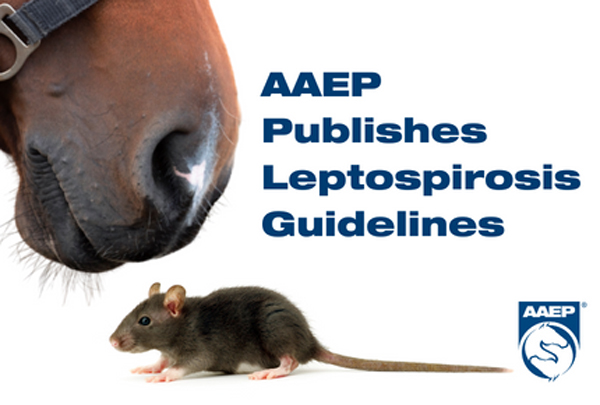AAEP Publishes Leptospirosis Guidelines
The American Association of Equine Practitioners (AAEP) has published on its website comprehensive guidelines to educate practitioners about risk factors, transmission, clinical signs, treatment and other considerations pertaining to Leptospirosis, a bacterial disease that can cause acute renal failure, in-utero infection and abortion, and equine recurrent uveitis in infected horses.
There are currently more than 35 recognized Leptospira species comprising more than 300 distinct serovars of Leptospira, many of which are capable of infecting both animals and humans. In horses, Leptospira interrogans serovar Pomona type kennewicki is responsible for most cases of clinical disease in North America.
“Leptospirosis is a sporadic but important disease of equids with the potential for substantial impact on breeding farms and horses residing in endemic regions,” said Sally DeNotta, DVM, Ph.D., DACVIM, clinical assistant professor of large animal internal medicine at the University of Florida College of Veterinary Medicine and chair of the AAEP’s Infectious Disease Committee. “We hope these guidelines will support early recognition of the clinical signs of equine Leptospirosis and facilitate prompt diagnosis and treatment of affected animals.”
Antimicrobial therapy is often used to treat clinical signs and reduce Leptospira shedding in infected horses. For prevention of Leptospirosis infection and abortion in horses residing in endemic regions, an inactivated Leptospira interrogans serovar Pomona type kennewicki vaccine is available and approved for use in healthy horses six months of age and older.
Dr. DeNotta co-authored the Leptospirosis Guidelines with Thomas J. Divers, DVM, DACVIM, DACVECC, the Rudolph J. and Katharine L. Steffen Professor of Veterinary Medicine at Cornell University College of Veterinary Medicine. The guidelines were reviewed and approved by the AAEP’s Infectious Disease Committee and board of directors. View the guidelines or save them to your mobile device for future reference at https://aaep.org/document/leptospirosis-guidelines.
Besides Leptospirosis, AAEP guidelines for 22 additional equine infectious diseases can be found at https://aaep.org/guidelines/infectious-disease-control/using-guidelines. In addition, five foreign animal disease guidelines are available at https://aaep.org/infectious-disease-control/foreign-animal-disease-guidelines.
You can listen to the audio version of this press release here: AAEP Publishes Leptospirosis Guidelines | AAEP











